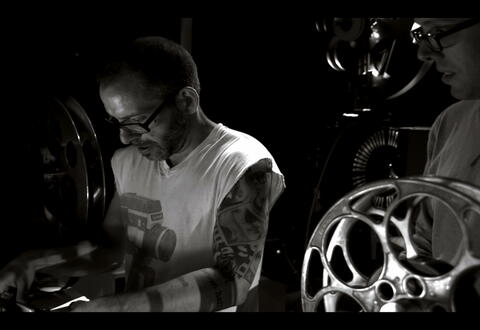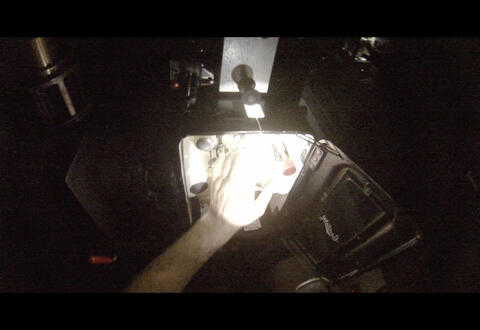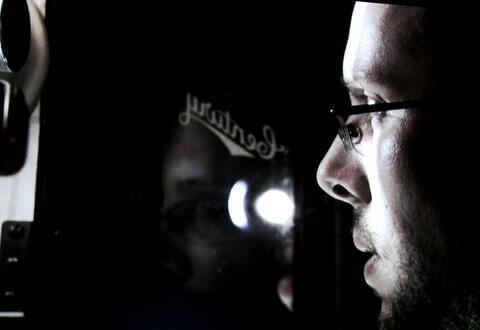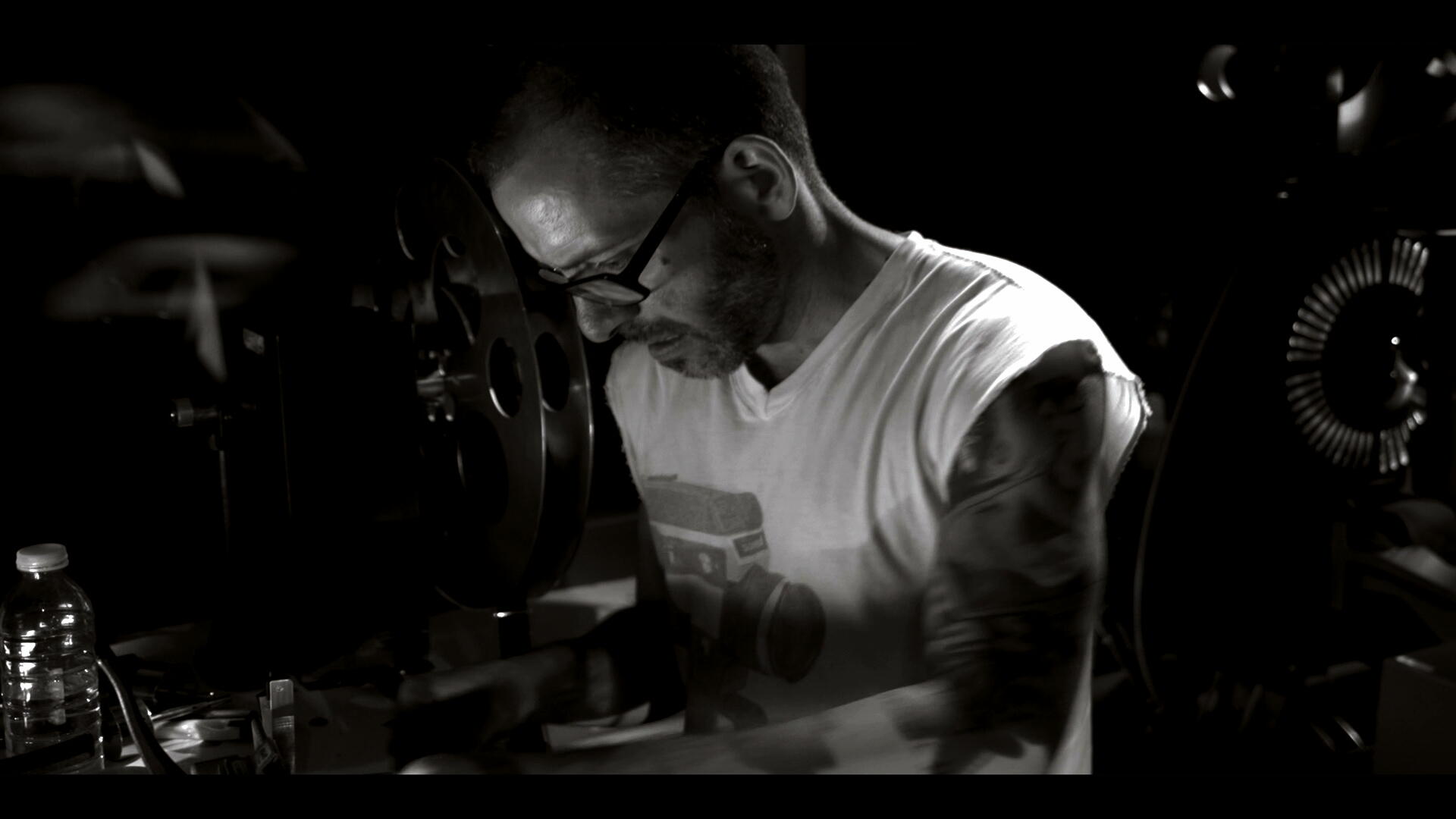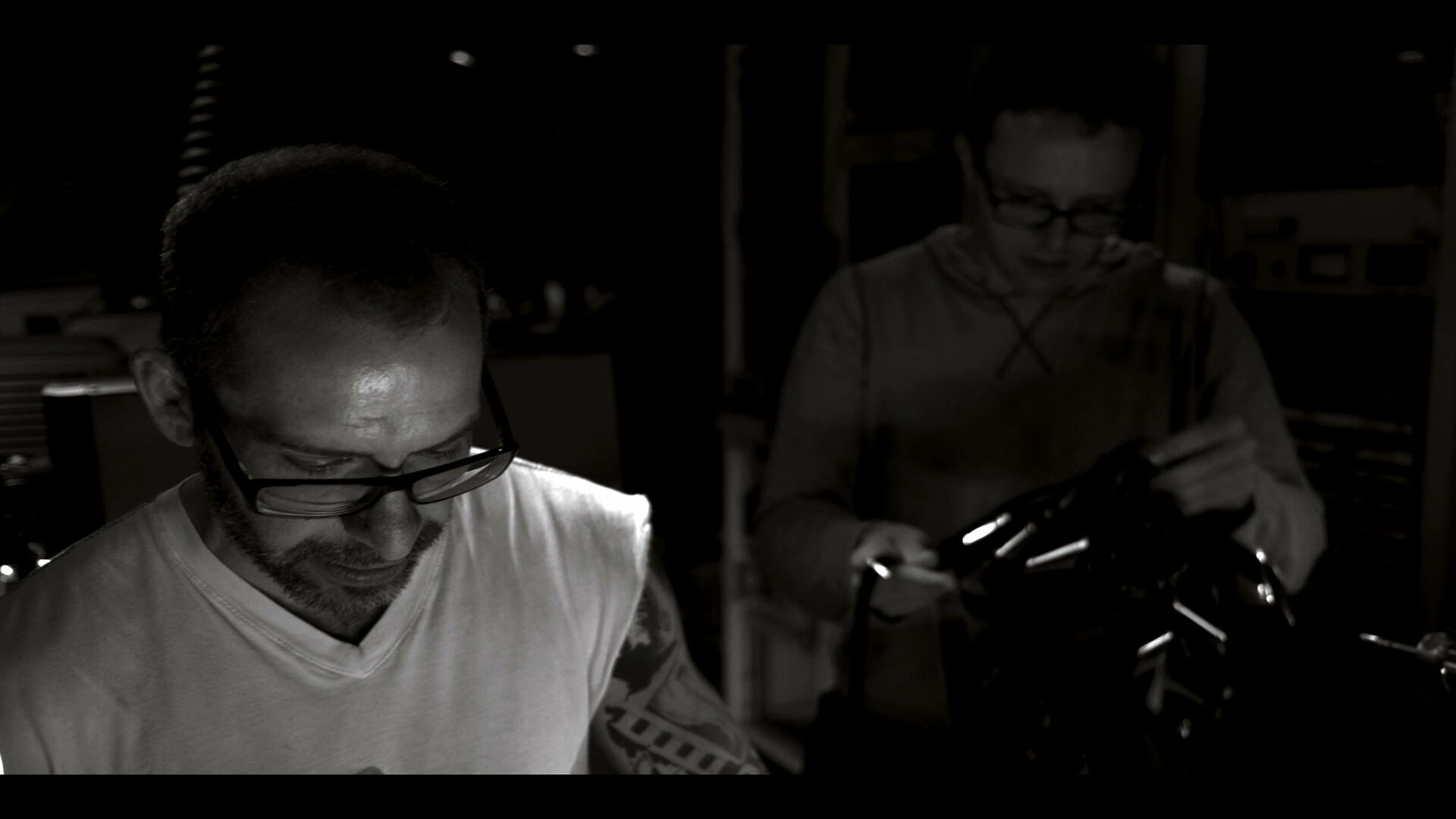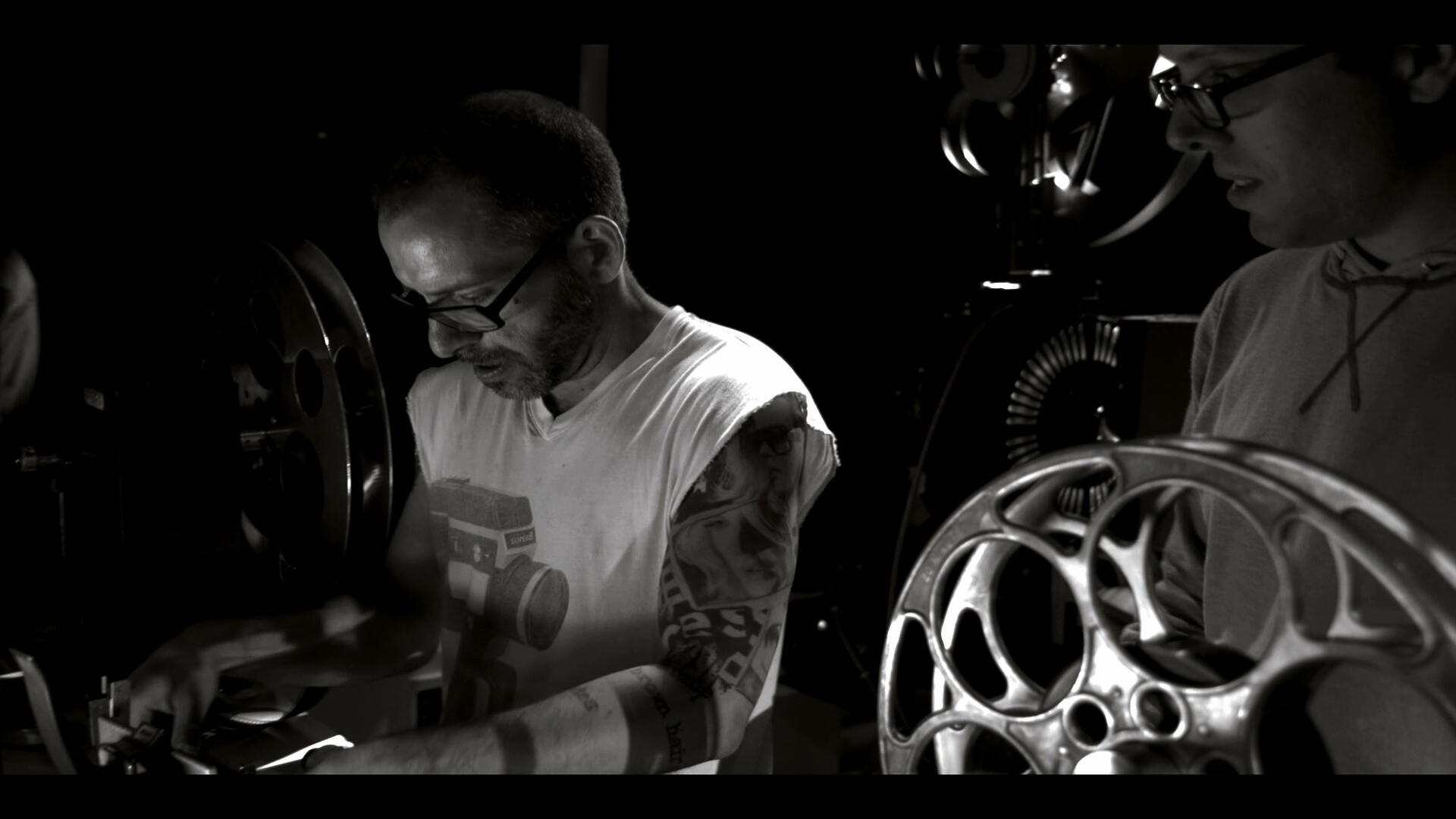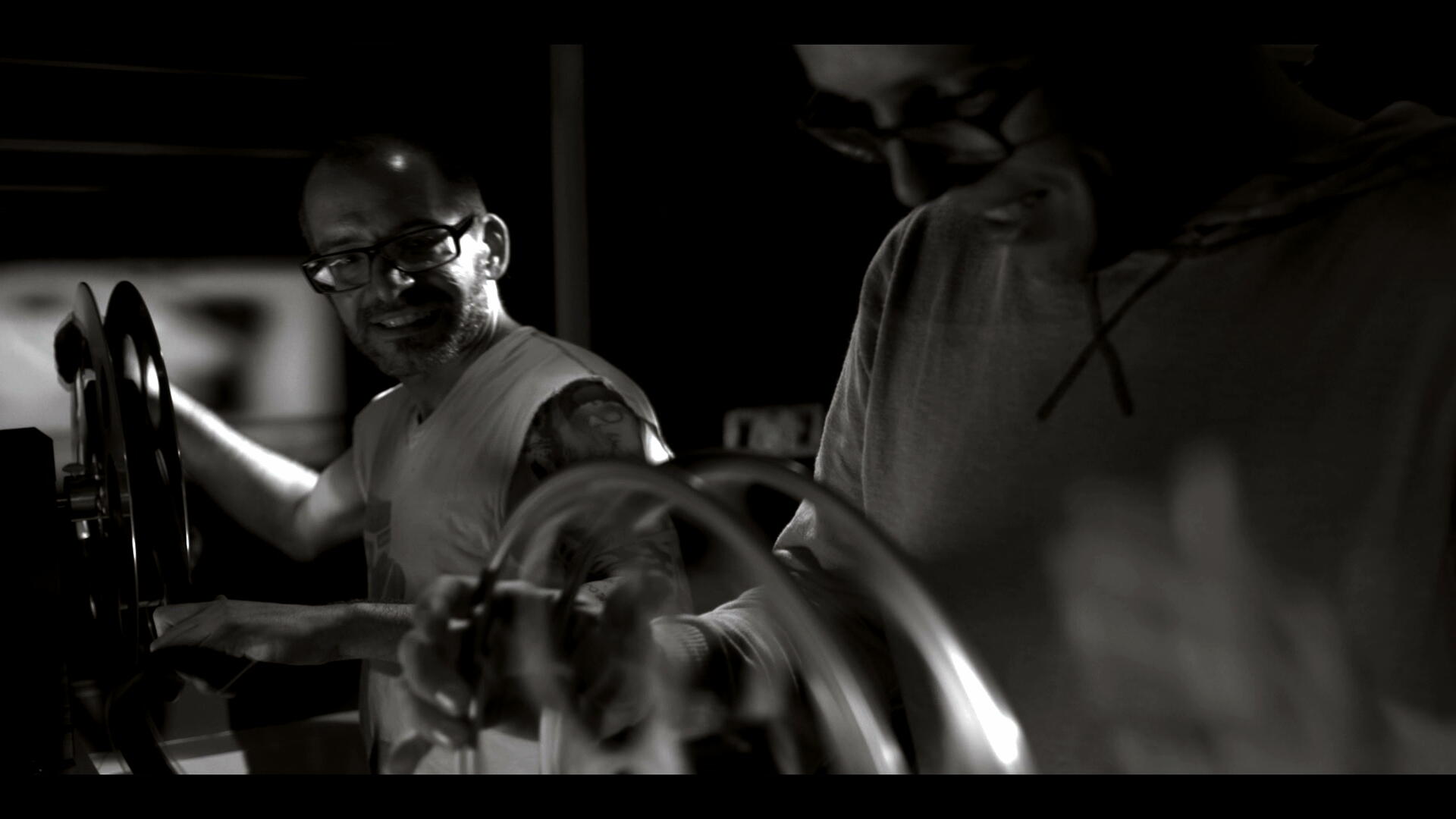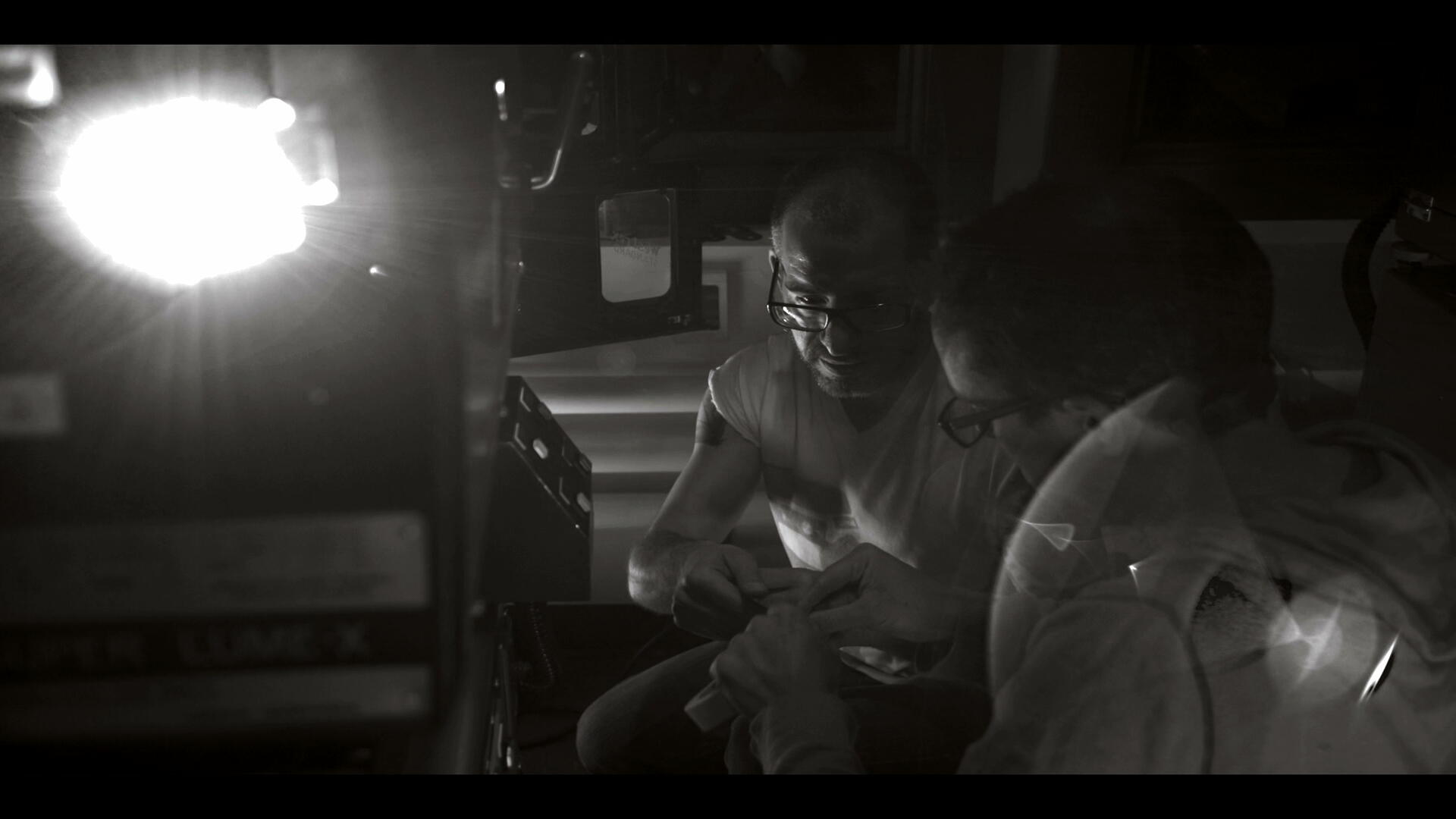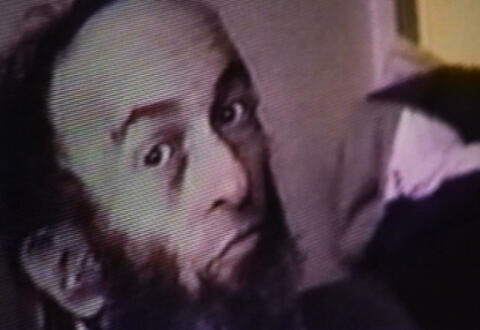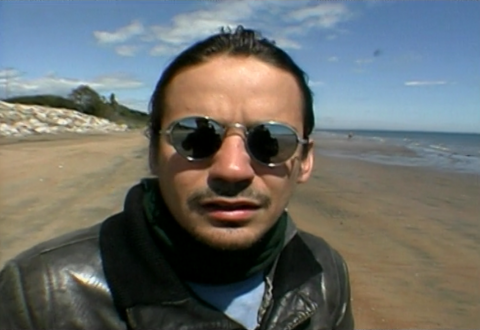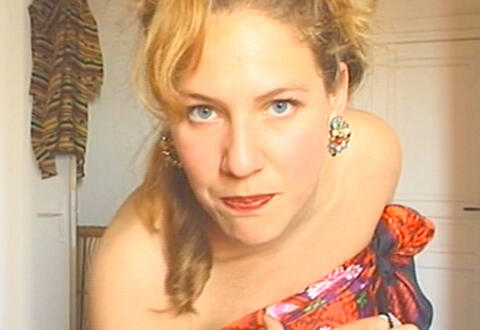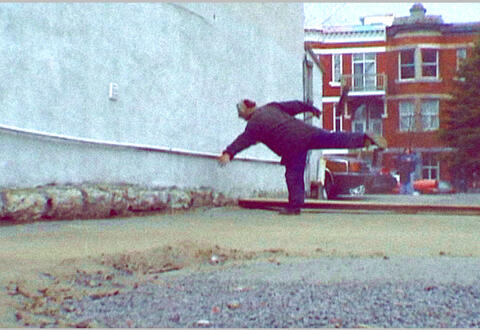Filmstripe
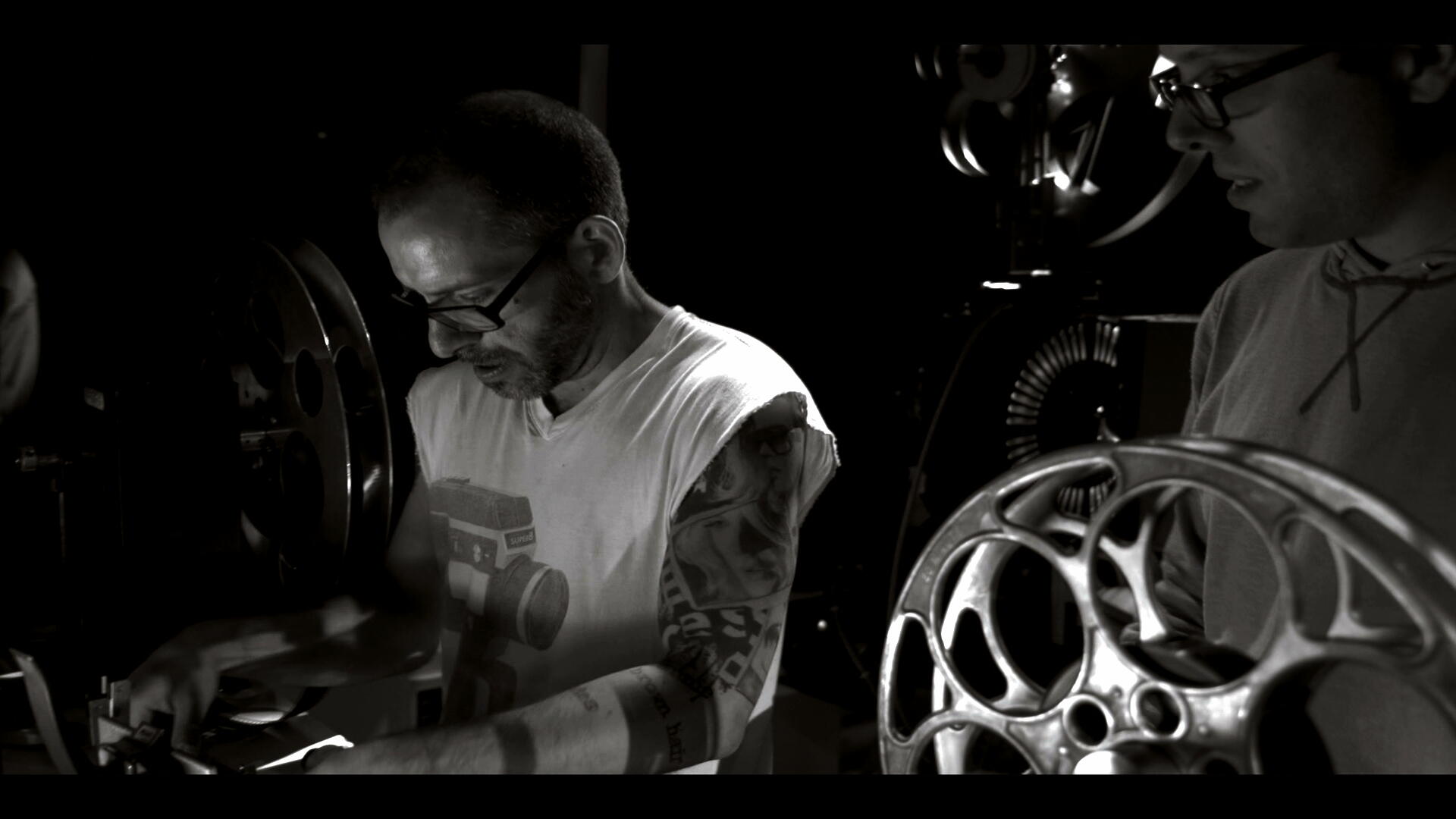
A projectionist, a heap of 35mm film and a countdown : the show is about to begin. An apprentice listens while the busy projectionist shares his memories. A tender and humorous look at the transformation of cinema and a profession that has become obsolete.
Serie
Credits
Technical information
Documentation
Interview with John Blouin
What inspired you to make this work?
The closing of a cinema, among so many others, but I literally lived in this one as a projectionist, it is also where I came of age as a performer/filmmaker. A film made with a sense of urgency, a work that is driven by a need to remember.
What is your relationship to celluloid?
It’s like in Filmstripe, by assisting the projectionist (the same as in the film), one is steeped in celluloid. Then, I took up the trade myself —in the same place—for over ten years. There I was surrounded by the hum of the projectors and bathed in the claire-obscure of a projection booth. After work, I began to experiment with 35-16 mm film loops, with a particular focus on projection errors, there where the projectionist unwittingly appears on the screen. I took this further through multi-projection performances titled Cabina Obscura.
What was the motivation behind your choice to film in a digital format to depict—not without nostalgia—the era of celluloid, which is currently disappearing?
I did not want to overdo it with 35mm. I wanted to speak of the present and today films are made with digital means. Things change, and I try to transform myself in tandem with these changes. To film with digital equipment was a way to look forward. But, I have the persistent idea to make a 35mm copy, which would accumulate the projections traces as it ages.
Filmstripe seems to be situated between fiction and documentary. The projectionist performs and stimulates his senses before a camera that documents his gestures which are bound to disappear. Should Filmstripe be viewed as a story and an homage?
Filmstripe is on the threshold of all this. It is an almost didactic documentary in order to provide people with a reference point to understand how 35mm projection operated. This is why we shot with real projectionists on their worksite. This enabled us to capture the gestures of these artisans. It is also a story with a plotline and a suspense element. Since the main character is a gifted storyteller we were able to play with this by introducing precise details. Without a script and only the constellations on the projection. And it is an homage to the cinema that is closing, to the technologies that are vanishing, but above all to these companions of the image who manipulatedand embodied it.
Interview by Vidéographe, 2012.
Film, Cinema, Projection






